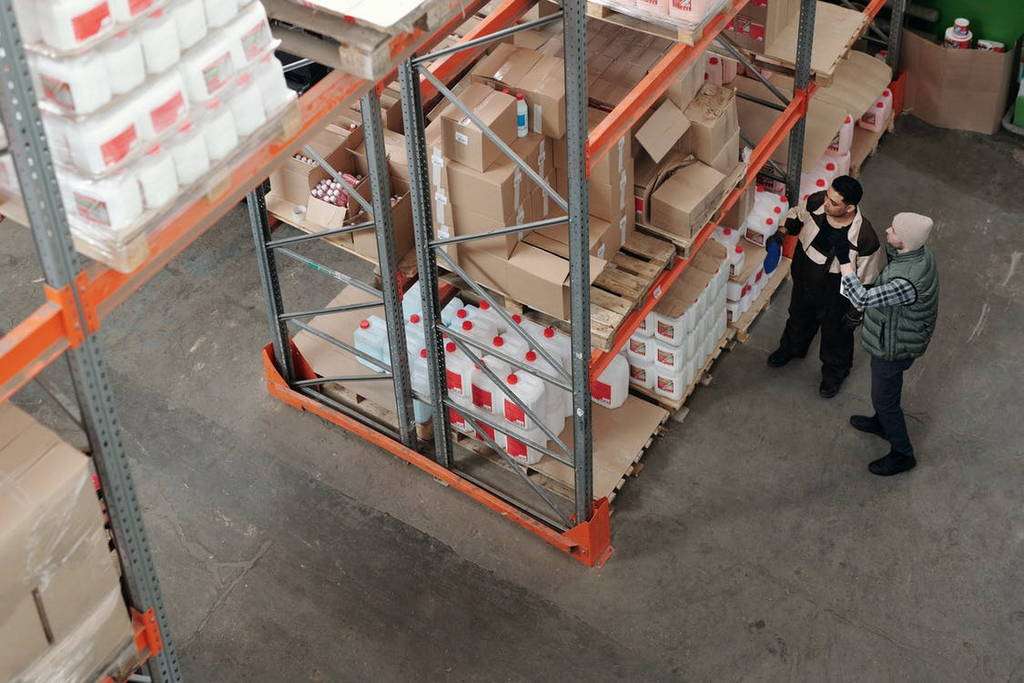When it comes to Seller Fulfilled Prime vs. FBA, you’re probably wondering – what’s the difference? What are the pros and cons?
We’ve been in the trenches of selling on Amazon for several years – and after exploring both options, we’ve put together a useful guide for comparing and contrasting each fulfillment method (along with helping you determine which fits your style and business model better).
While both models allow you to sell with Prime benefits (including the increase in visibility and sales with a Prime logo next to your products), there are key distinctions you need to consider – especially since they can have a giant impact on your bottom line. Let’s dive in!
Use this outline to skip to any section of this page:
- What’s the difference between Seller Fulfilled Prime and FBA?
- Amazon FBA: Pros
- Amazon FBA: Cons
- Seller Fulfilled Prime: Pros
- Seller Fulfilled Prime: Cons
- Which is better: Seller Fulfilled Prime or FBA?
What’s the difference between Seller Fulfilled Prime and FBA?
FBA, or Fulfillment by Amazon, is a program that allows sellers to send their products to Amazon’s warehouses and let Amazon take care of shipping them to customers. This means – beyond shipping your inventory from your supplier to Amazon – that Amazon handles every part of the fulfillment process (including storage, picking and shipping).
Seller Fulfilled Prime is a newer program that allows sellers to ship products directly to customers using Prime-eligible shipping methods. You’re responsible for storing and preparing inventory for shipment – along with arrangements for shipping.
What’s the biggest difference?
With Seller Fulfilled Prime, you are in charge of shipping the item yourself. This means that you need to make sure that your items are shipped in a timely manner and meet Amazon’s customer service standards. If you do not meet these requirements, your account could be canceled and you may not be able to sell on Amazon anymore.
On the other hand, with FBA, Amazon takes care of everything for you. This includes packing and shipping the item, as well as dealing with any customer service issues. This can be a great option if you don’t have the time or resources to handle shipping yourself.
So, which option is right for you? That depends on your business needs and what you’re comfortable with. If you’re looking for convenience and don’t mind letting Amazon take care of shipping, then FBA might be the best option for you.
However, if you want more control over shipping and you’re able to make sure your items are shipped quickly to meet Amazon’s standards, then Seller Fulfilled Prime may be a better choice. Let’s dive into each option:
Amazon FBA: Pros
Relatively cheap rates
The low rates associated with Amazon FBA are one of the main benefits of using the service. Because you’re able to ship your products to Amazon’s warehouses for a low cost, you’re able to make a profit on what you sell. This is in contrast to other shipping methods, where you may not be able to make a profit or may have to charge more for your products in order to cover shipping costs.
Amazon FBA fees are low for a number of reasons:
- Amazon is a highly efficient company with a well-developed infrastructure. This allows them to pass on savings to their customers in the form of lower rates.
- Amazon FBA involves using Amazon’s own warehouses and shipping network. This results in lower shipping costs, which are passed on to the customer in the form of lower rates.
- Amazon FBA is a volume-based business, which means that the more items you ship, the lower your rates will be. This makes it an ideal service for businesses that ship large quantities of products.
Keep in mind – Amazon FBA takes care of all the logistics for you. This includes handling customer service inquiries, fulfilling orders, and shipping products. This means that you can focus on growing your business rather than dealing with the day-to-day tasks of shipping products.

Location-independent
The best thing about Amazon FBA is that you have the flexibility to work from anywhere with a laptop. Whether you’re taking a break at the beach or catching up on work during your morning commute, being able to work remotely is a huge plus. You’re not tied down to a physical office, and you can take on projects as they come.
Since Amazon FBA is an online business model, you don’t need any inventory or storage space – another big win if you’re tight on space. It’s just a matter of shipping inventory from your supplier to Amazon FBA warehouses, and Amazon will handle everything from there.
All in all, Amazon FBA is an excellent option if you’re looking for a remote work opportunity that has plenty of growth potential – with many FBA sellers doing 5 and 6 figures in monthly revenue (with 7 figure business evaluations and acquisitions).
Fast & streamlined
The Amazon FBA business model is one that is easy to learn and follow. There are plenty of tutorials available from Amazon, as well as a large and supportive community of sellers who are already doing this business. This means that there is plenty of help and advice available if you need it, and you can be confident that you’re following best practices.
Another benefit of the Amazon FBA business model is the simplicity of it. You don’t have to worry about shipping or handling products yourself – Amazon takes care of all that for you. All you have to do is:
- Find products that are selling well on Amazon
- Source them from a supplier
- Ship them to Amazon
Then, once they’re sold, Amazon will ship them directly to the customer. This makes the process very simple and easy to manage.
With FBA, you have access to a system that lets you manage your inventory and fulfill orders with ease – providing you with a centralized system that is surprisingly simple to manage. You can use the Amazon FBA Dashboard to keep track of your inventory, and you can use the Amazon FBA calculator to determine how much you need to pay in fees.
Amazon FBA: Cons
Requirements
The negative downside to using Amazon FBA is that the requirements are strict. If you don’t meet the requirements, you could face higher fees, penalties, or even have your account suspended. So it’s important to make sure that you’re familiar with all of the Amazon FBA requirements before signing up.
Keep in mind – when you sign up for FBA, you agree to certain requirements that must be met in order to continue using the service. If you don’t meet these requirements, Amazon needs to take action and hold sellers accountable – in order to prevent customers from having negative experiences.
Some of the requirements include:
- Having a valid seller’s permit
- Accurate and updated contact information
- Proper labeling and packaging of your products
You can read more about Amazon’s FBA requirements here.
Must have an FBA prep process
When you’re ready to send your inventory off to Amazon, you’ll need to go through an FBA prep process. This will ensure that your items are properly prepared for shipping and that they meet Amazon’s requirements. There are a few things that you’ll need to do in order to prepare your items for FBA:
- Make sure that all of your items are properly labeled. You’ll need to include an FBA barcode on each item, as well as the product title, quantity, and weight.
- Package your items appropriately. All of your items should be placed in a single box, and the box should be sealed shut. Make sure that there is plenty of cushioning material inside the box to protect your items during transit.
- Prepare your inventory for shipping. You’ll need to create a shipping plan with all of the items that you’re sending off to Amazon.
However, most high-level & profitable Amazon sellers prefer to outsource FBA prep to a service like ZonPrep – especially when it comes to the amount of time and requirements needed to manage the process. This allows you to focus on the important tasks that allow you to grow your business – like product sourcing and marketing

Inventory in a different location
With FBA, you don’t have immediate access to inventory. Because it’s stored at Amazon’s warehouses, you have to rely on them to keep track of it and ship it out as needed – and if you ever need access to your products, you’ll need to pay for packaging and shipping fees to get it to you.
However, there aren’t many cases where this affects Amazon sellers in a significant way. Sure, you might need individual units for product photography or social media influencers, but the cost is minimal to ship a small order. Almost all FBA sellers come to realize this is an unfounded concern early on.
If you want further help, check out this article on the cheapest way to ship to Amazon FBA warehouses guide.
Seller Fulfilled Prime: Pros
Same Prime logo & boost in visibility + sales
If you’re looking to increase your visibility and sales as a seller, you can’t go wrong with Seller Fulfilled Prime. With this program, you get the Prime logo and status – which can really help boost your listings.
And because Prime members are more likely to buy from sellers with the Prime badge, you’re likely to see an increase in sales overall.
This allows you to take advantage of all the benefits of being a Prime seller, while also holding and managing your own inventory (if you prefer).
More control over inventory & storage
When you sell with Seller Fulfilled Prime, you have more control over your storage and inventory. You can house your products in your own warehouse and manage shipping yourself using the carriers of your choice.
This could provide you with greater flexibility and control over your inventory, which can be a valuable asset when running a business. With Seller Fulfilled Prime, you still maintain the advantage of being able to offer Prime shipping benefits to your customers – attracting more buyers and boost sales.
Overall, Seller Fulfilled Prime provides a number of benefits that can help you grow your business. If you’re looking for more control over your inventory and shipping, then Seller Fulfilled Prime should be on your radar.
Set your own return/refund policy
When you sell with Seller Fulfilled Prime, you’re in control of your own return policies and refund policies. You can choose to accept or refuse returns, and set your own refund policies. You’re also in charge of handling customer inquiries and returns.
This gives you more flexibility to create the Returns and Refunds policy that works best for your business. It also lets you provide excellent customer service, which can help you build a loyal customer base.
Seller Fulfilled Prime: Cons
Higher shipping rates
Another downside to Seller Fulfilled Prime is the higher shipping rates. Since Amazon gets discounted bulk shipping rates, you will miss out on those discounts if you fulfill orders yourself. This means that you will likely have to charge more for shipping, which could lead to fewer sales.
Because Amazon is such a large and well-known company, customers are often more likely to order from them rather than from a smaller seller. This can also lead to decreased sales. Overall, while Seller Fulfilled Prime has many benefits, the higher shipping rates and competition from Amazon are two potential downsides to consider – especially with how much they can eat into your profits.
Greater maintenance & management
The negative downside to Seller Fulfilled Prime is that it requires more time, management and maintenance. It can be difficult to focus on product sourcing and marketing when you also have to handle shipping and fulfillment. This can make it hard to grow your business.
Beyond that, Seller Fulfilled Prime can be more expensive than using a 3rd-party fulfillment service – and even if you decide to use a 3PL, Amazon is still better equipped to handle your Amazon orders, since a 3PL focuses on multi-channel fulfillment (website orders, other selling platforms, and more).

Distracts away from growth opportunities
With so much time and energy tied up in storage, packaging and shipping, there’s less bandwidth to focus on expanding your product selection or increasing your customer base.
Because you’re fulfilling orders yourself, you might have less control over delivery times – which can impact customer satisfaction and future sales. You’re now negotiating and dealing directly with carriers yourself, and you don’t have access to Amazon’s in-house logistical services that often have faster & cheaper delivery times than carriers like USPS, FedEx and UPS.
Which is better: Seller Fulfilled Prime or FBA?
Most Amazon sellers prefer to use FBA – especially with being able to take advantage of cheaper shipping rates and reduced fees. FBA makes it easier to grow your business by handling all of the inventory and shipping tasks for you – which can be a major hassle for any sellers who choose to manage these tasks themselves.
Overall, FBA is a more cost-effective and efficient option for businesses looking to expand their operations. It opens up significant time to focus on growth opportunities with product sourcing, marketing, and research that high-level Amazon sellers dedicate their attention to.

